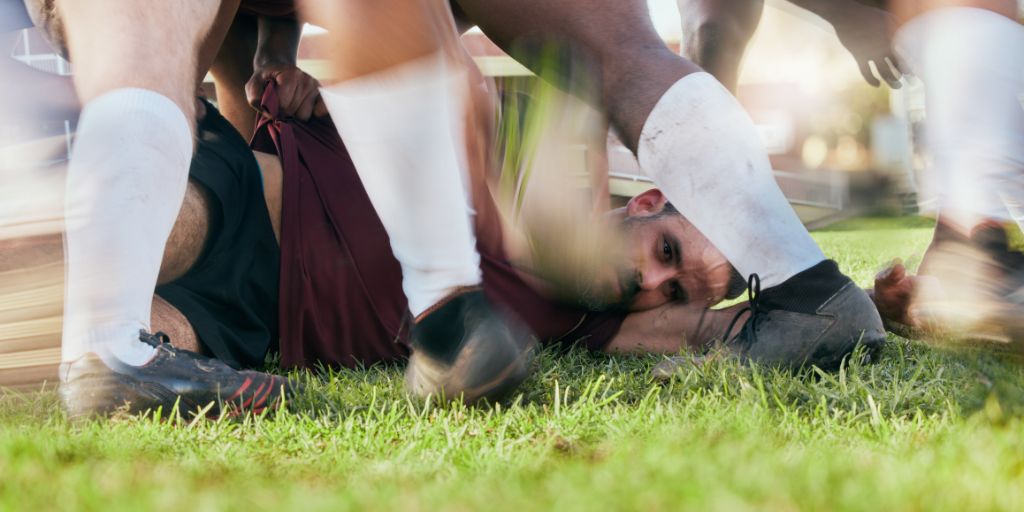
With concussion and head injury in sport the subject of increasing focus and research, professional mountain bikers will become the first to use a pioneering device to monitor head impact and its long term repercussions.
Several of the world’s top riders will start the new season with the HIT device, which monitors the G-force of a head impact, attached to their helmets. The technology also measures the smaller cumulative impacts experienced by riders on runs, even when they don’t crash, similar to the effect on a footballer regularly heading a ball over the course of a match.
Developed in Scotland, the unit connects to an app which provides a traffic light warning system. As concussions can be hard and complicated to diagnose, with variable factors influencing concussion severity including bone thickness, hydration, whole body skeletal muscle strength or even past concussions, affecting how people react, the HIT system allows the user to make an informed decision on whether or not to seek medical attention.
The device is also fitted with a GPS tracker and can alert parents if a child has had an accident on their bike or scooter, for example.
Studies have revealed that people who have suffered serious concussions, particularly under the age of 21, are more prone to long term implications, including depression and suicide.
HIT’s developers say it can be used in any “gravity sport” where helmets are worn and a leading academic says data is key in learning how head impact affects brain health.
Angus Hunter, a Professor in Neuromuscular Physiology at Nottingham Trent University, has spent more than a decade investigating the short-term effects of concussion on physical and mental health. He said:
“Data is important to better inform decision-making around safety in all sports where head impact is a risk. My lab has been working closely with HIT to understand what the head accelerations actually mean because it’s all very well having a nominal value but it’s what this means in the brain that’s important. By capturing data on the forces involved in head impacts alongside electrophysiological brain changes, we hope to identify thresholds for concern and allow sportspeople, coaches and parents to make more informed decisions about whether to continue the sport, rest or seek medical help. This could help save lives and reduce risk for neurodegeneration later in life.
“For cycling, there is a greater risk of a high force impact. A high impact linear or rotational force to the head places the rider at risk of something called Second Impact Syndrome. They can fall and feel fine, get back on the bike and keep riding but parts of their brain can often swell, even bleed. Therefore, if they have a second impact, this can result in death. Monitoring impact can provide coaches with a data-informed decision to withdraw that rider off their bike and give their brain a recognised period of time to recover.”
The gravity sports community is a tight knit one and the recent death of professional skateboarder James Hardy has been mourned across that community. James was suffering from head trauma and seizures at the time of his death.
The launch of HIT’s device has been welcomed by some of the world’s top riders, including former world champion Reece Wilson who had a year out of the sport due to concussion. He said:
“They say you’re not truly living life unless you’re living it on the edge, and I couldn’t see myself doing anything else but we do crash pretty frequently in mountain biking so the HIT device is going to be really important for us.
“It means we can monitor all of the impacts and if we have a big one and need to take some time off then so be it, we can make a plan to ensure we’re not adding any extra stress or injury to the brain. It’s very difficult to track a brain injury simply because you can’t see it and everybody has symptoms that can be easily diagnosed as something else so I feel very lucky to be able to have this looking over me this year.”
Recent research suggests women are more susceptible to the long-term effects of a concussion. A study of 2,000 people who suffered a traumatic brain injury determined that women were more likely than men to have symptoms, such as headaches, dizziness, fatigue, and difficulty with memory and concentration, one year after sustaining the injury.
Reece’s teammate, Hattie Harnden, who in 2021 became the youngest rider ever to win an elite Enduro World Series event, recalls her own experience of concussion. She said:
“I had a concussion in 2021. I’d never experienced concussion before that and I spent several days in a dark room. I remember thinking it was a real achievement just to make it outdoors, which is really sad when you look back on it. There’s a temptation to rush back into racing and I definitely rush things a bit so I think HIT’s technology will ensure I only return to riding when I’m healthy enough and that’s so reassuring.”
HIT’s creator, Euan Bowen, had the idea for the technology after seeing a friend suffer a serious concussion in a rugby match. He believes the device will help better our understanding of the repercussions and treatment of head injuries:
“What our device does is inform you with data so you, your teammate, or a parent can make a better decision. The device will learn with you and that’s the most exciting thing about it. We believe it is pioneering because we’re not collecting data in the lab, we’re collecting it from everyday users and pro riders, and we’re seeing trends. We’re going to see how head impact affects gender, age, and even how effective different equipment is. From there, we’ll start to see the whole picture and that will help inform research on the long term effects of concussion and head injury.
“It’s an accessible device, not just for the pro riders, it’s for any age, any activity, any gender, and it’s helping protect you now, but in the future as well.”












